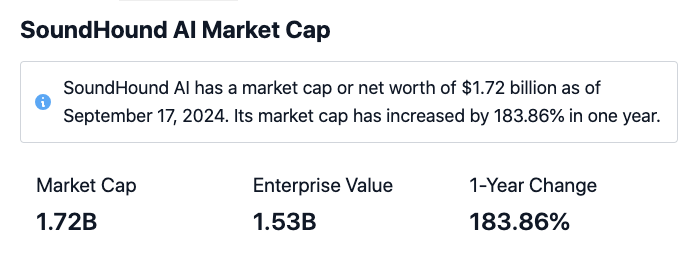Top Info For Choosing Best Stocks To Buy Now Websites
Ten Tips To Evaluate The Quality Of Data And Determining The Sources Of An Ai Trading PredictorThe evaluation of data quality and sources is crucial when making use of an AI predictive model for stock trading since the quality and quality of data directly impact the accuracy of predictions. Here are the top 10 ways to assess the quality of data and sources.
1. Check data accuracy and completeness
Why: For building solid models, it is essential to have complete and accurate data.
How: Check data against several reputable sources to ensure accuracy. Verify the completeness of your data by making sure there are no gaps in your data or missing numbers especially when it comes to metrics that require immediate responses.
2. Assessment of Data Timeliness and Frequency
Why: Stock markets tend to be extremely active. Insufficient data could result in outdated predictions.
How to: Check that the data is being updated in real-time or at a regularity that is compatible with your strategy for trading. For intraday or high frequency trading, second by second data might be required. For longer time models, daily or weekly updates are sufficient.
3. Check the credibility and reliability of the sources you are using
The reason: Trustworthy sources lower the risk of relying on inaccurate or biased data, which could alter predictions.
How to use data only from trusted sources. Confirm the source is widely acknowledged and is backed by quality control measures.
4. Verify that sources are consistent
Why is that inconsistent and inconsistent data can confuse models, decreasing the accuracy of their predictions.
Compare the data that comes from multiple sources. If one source is consistently off, look for possible issues, like different calculation methods or data collection methods.
5. Find the data Granularity and The Scope
Why? Appropriate scale and granularity assures that the data is able to capture sufficient detail without unwanted noise.
What should you do: Ensure that the data granularity matches your forecast range. If you are predicting price on a daily basis, a daily granularity is usually sufficient. However models that rely on high-frequency data could require tick-level data. Make sure you include all relevant variables within the scope (e.g. the price of stocks, volume as well as economic indicators).
6. Take a look at the historical data coverage
The reason: Having adequate historical data will allow for robust testing of models and solid back-testing.
How: Verify that historical data covers multiple market cycles which include bear, bull, and flat markets. This helps the model to adapt better to changes in market conditions.
7. Check Data Preprocessing Standards
The reason is that raw datasets may have inconsistencies, noise or outliers which affect the model's performance.
What to do: Determine if the data has been cleaned and normalized and how to deal with the absence of values, outliers and any transformations. A reliable preprocessing process helps models to learn relevant patterns without being affected by data errors.
8. Ensure Regulatory Compliance
Why: The use of uncompliant data sets can lead to legal issues.
What should you do to ensure that the data conforms to applicable regulations. (e.g. the GDPR regulations for Europe as well as the SEC regulations in the U.S.). Check to ensure that it does not contain proprietary or confidential information without having the right authorizations.
9. Examine latency and data accessibility.
Reason: For trading that is real-time, even slight delays in data processing can impact trade timing and profitability.
What is the best way to measure data latency (delay between source and model) and ensure that it is compatible with the trading frequency you're using. It is essential to evaluate the ease with which data is accessible and whether this data can be seamlessly integrated with the AI prediction.
10. Explore alternative data sources to gain Additional Insights
The reason is that alternative data (like sentiments derived from social networks, news or even web traffic) can boost the accuracy of conventional data.
What can you do to evaluate alternative sources of data, which can enhance your model insight. These sources should be high-quality and reliable and in line with the input format used by your model and your predictor.
Make sure you have a solid base when evaluating data sources and the quality of any AI stock trade predictor. Avoid common mistakes and ensure a robust model performance. View the best from this source for website examples including technical analysis, ai share trading, best site to analyse stocks, best website for stock analysis, ai companies stock, investing ai, ai stock picker, ai companies stock, stock market investing, ai trading software and more.

Ten Top Tips For Assessing Meta Stock Index Using An Ai-Based Prediction Of Stock Trading Here are the top 10 strategies for evaluating the stock of Meta efficiently using an AI-based trading model.
1. Meta Business Segments The Meta Business Segments: What You Should Know
Why: Meta generates income from diverse sources, like advertisements on Facebook, Instagram and WhatsApp virtual reality, as well metaverse-related initiatives.
It is possible to do this by gaining a better understanding of revenues for every segment. Knowing the drivers for growth in these areas will allow AI models to make precise predictions of future performance.
2. Industry Trends and Competitive Analysis
Why? Meta's performance depends on trends in digital advertising and the usage of social media, as well as competition with other platforms like TikTok.
How do you ensure that the AI model analyzes relevant trends in the industry, such as changes in the user's engagement and advertising spending. Meta's position on the market will be evaluated through an analysis of competition.
3. Earnings Reported: An Evaluation of the Effect
Why: Earnings releases can cause significant changes in the price of stocks, especially for firms that focus on growth, such as Meta.
Analyze the impact of historical earnings surprises on stock performance through monitoring the Earnings Calendar of Meta. Investor expectations should be determined by the company's forecast expectations.
4. Utilize the Technical Analysis Indicators
What is the purpose of this indicator? It is a way to spot patterns in the share price of Meta and potential reversal moments.
How to incorporate indicators such as moving averages (MA) and Relative Strength Index(RSI), Fibonacci retracement level as well as Relative Strength Index into your AI model. These indicators aid in determining the best entry and exit points to trade.
5. Examine macroeconomic variables
What's the reason? Economic conditions (such as inflation, interest rate changes and consumer spending) can impact advertising revenues and user engagement.
How: Ensure that the model incorporates relevant macroeconomic information, such as unemployment rates, GDP rates and consumer trust indices. This will enhance the model's predictive capabilities.
6. Implement Sentiment Analysis
The reason: Market sentiment is an important influence on stock prices. Especially for the tech industry, where public perception plays an important role.
How to use sentimental analysis of news articles, and forums on the internet to gauge the public's perception of Meta. This information can be used to provide context for AI models.
7. Monitor Regulatory and Legislative Developments
What's the reason? Meta is subject to regulatory scrutiny regarding data privacy and antitrust issues and content moderating. This could affect its operations and stock performance.
How to stay up-to-date on developments in the law and regulations that may influence Meta's business model. Take into consideration the potential risks associated with regulatory actions when developing the business plan.
8. Backtesting historical data
Why is this? Backtesting helps assess how an AI model has been able to perform in the past in relation to price fluctuations and other significant occasions.
How do you back-test the model, make use of the historical data of Meta's stocks. Compare predicted and actual outcomes to assess the accuracy of the model.
9. Review Real-Time Execution Metrics
What is the reason? A streamlined trade is important to benefit from price fluctuations in Meta's shares.
How to: Monitor the execution metrics, like fill rate and slippage. Determine how well the AI model can determine optimal entry and exit points for Meta Stock trades.
Review Risk Management and Size of Position Strategies
The reason: Efficacious risk management is crucial for protecting capital from volatile stocks such as Meta.
How: Ensure the model incorporates strategies for sizing your positions and risk management based on Meta's stock volatility and the overall risk of your portfolio. This allows you to maximize your returns while minimising potential losses.
If you follow these guidelines you will be able to evaluate an AI stock trading predictor's capability to study and forecast the changes in Meta Platforms Inc.'s stock, ensuring it remains accurate and relevant in changing market conditions. Check out the best artificial technology stocks for blog info including good websites for stock analysis, ai trading software, ai stock, stock investment prediction, ai investment stocks, trading stock market, artificial intelligence and stock trading, ai share price, artificial intelligence stocks to buy, ai intelligence stocks and more.
